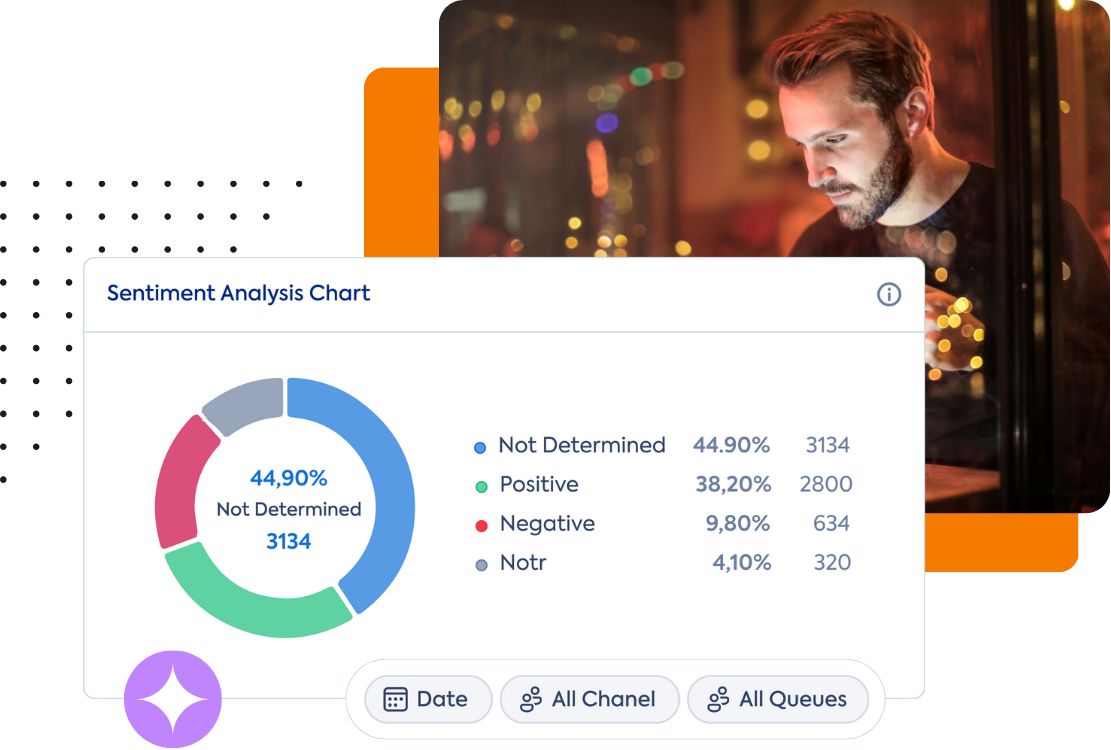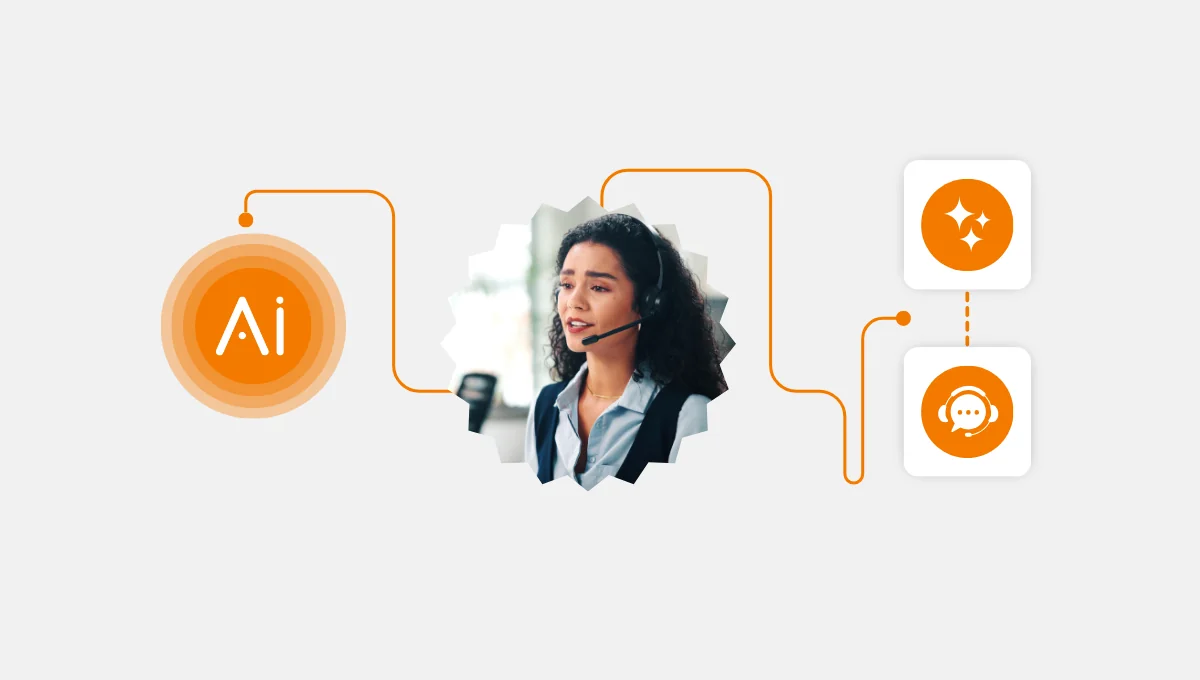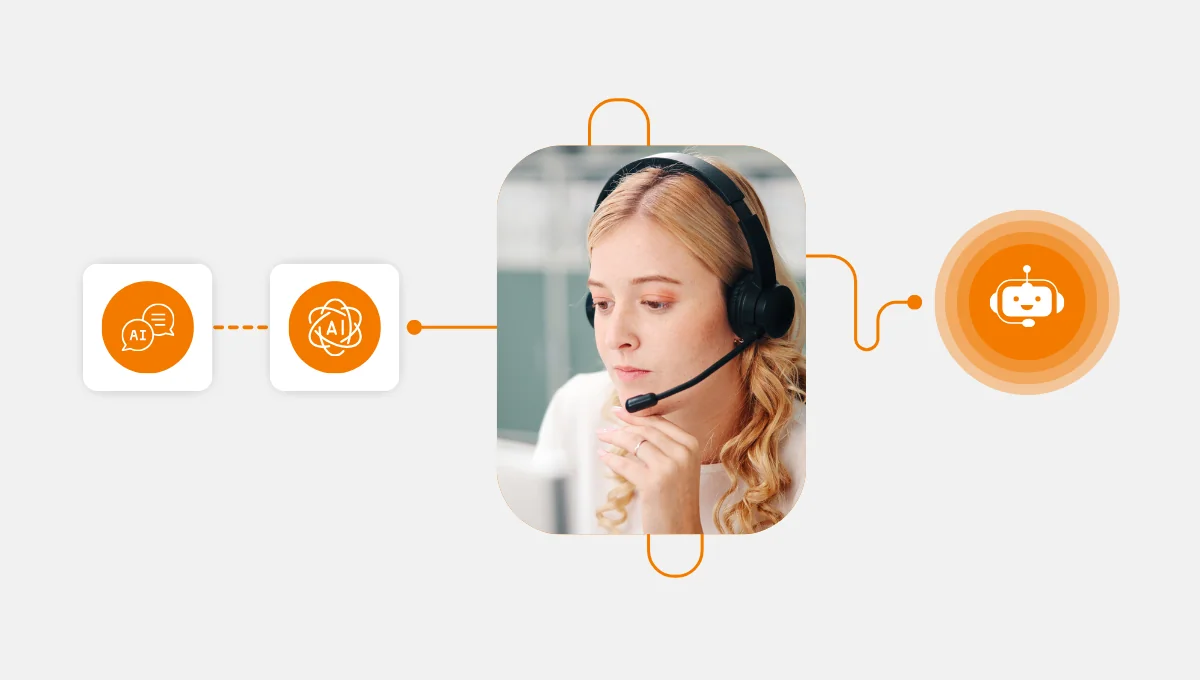As psychiatrist and author Dr. Samantha Boardman puts it, “Positive relationships aren’t just about solving problems. They’re about being seen, heard, and valued.”
That’s the heart of customer support psychology: helping people feel better through human connection, even when they’re calling about a missing package.
In this article, we’ll unpack how empathy, speed, and tech are psychological triggers for loyalty and satisfaction.
“Happy” Reading 🦉
Empathy Always Wins (Unless You’re a Robot)
Research from Harvard Business Review shows:
- Emotionally connected customers are more than twice as valuable as highly satisfied ones.
That means knowing what makes customers happy isn’t just about solving their issues, but how you make them feel while doing it. Cue empathy in customer service, the crown jewel of human-first CX.
Benefits of practicing empathy:
- Recognizes customer frustration: When someone says, “I’ve been trying to resolve this for two weeks,” don’t hit them with, “Please hold.” Try: “That sounds super frustrating. Let’s get this sorted right now.”
- De-escalates tense situations: Empathy isn’t passive, it’s your most powerful diffuser. Instead of defending your process, say, “Totally get why you’re upset. Let’s untangle this together.”
- Creates rapport and connection: If a customer casually drops, “I’m handling this while juggling my toddler,” you say, “Multitasking with a toddler? You deserve a medal.” Little moments, big impact.
Empathy turns conflict into connection. Every time.

The Power of Speed and Personalization
Today’s customers want answers fast, like microwave popcorn fast. A PwC report revealed:
- 43% of consumers are happy to pay extra for convenience, and 42% are willing to pay more for a warm, welcoming experience.
So if you’re not delivering fast and effective support, you’re not just slow, you’re forgettable.
On top of that, customers crave personalized support, so:
- Recognizes them by name or account history: “Hey Jamie, great to see you back. Ready to tackle today’s challenge?” That’s social recognition, and yes, it triggers oxytocin which creates belonging.
- Reflects their specific needs or past issues: Say a customer had login issues on their last interaction. Starting a call with, “Last time you had trouble logging in, so let’s start there,” shows not just memory but intent. This taps into cognitive ease, a psychological state where the brain experiences less effort due to familiarity.
- Feels tailored, not templated: Skip “Your request is in process.” Say, “I’ve got your billing issue in front of me and I’m checking with our team now.” Reward centers in the brain light up when customers feel personally attended to.
Serve fast. Speak like a human. That combo works every time.
Tools That Think (and Feel) Like Humans
This is where tech gets emotional in the best way. Call Center Studio helps support teams to scale human-like service with the brains of a machine.
Here’s how it plays out:
- Smart call routing based on skills or urgency: With automatic call routing customers get to the right person without hopping departments. That reduces mental friction and builds trust fast.
- Real-time sentiment tracking to guide tone and response: The system senses a customer’s mood—frustrated, neutral, thrilled—and gives agents cues. Think of it as an emotional radar for better conversations.
- CRM integration for personalized context and faster resolutions: With API and CRM integrations, agents know your name, your last three calls, and your current issue before you speak. It’s like talking to a friend who remembers everything.

You’re not just resolving issues, you’re delivering an experience that says, “We get you.”
Remember: Tech that listens is tech that wins.
Consistency: The Unsung Hero of Satisfaction
According to PwC:
- Consistent service across channels increases customer retention by up to 70%
That’s why consistency ranks high among customer loyalty factors. Great service once is nice. Great service every time? That’s unforgettable.
Why consistency matters:
It makes your brand feel professional and reliable—This speaks to the psychological principle of consistency, which builds trust. When a customer sees the same tone, care, and quality every time, their brain registers the brand as stable and dependable, lowering anxiety and increasing loyalty.
It reflects strong emotional intelligence in CX—Emotional intelligence means reading and responding to customer emotions accurately. When teams show empathy and adjust communication based on mood or context, customers feel genuinely understood, which activates emotional reward centers in the brain.
It saves customers from repeating themselves—Having to repeat information creates cognitive load—basically, mental fatigue. If your system remembers its context, customers feel respected and experience what psychologists call “processing fluency,” which makes interactions feel smoother and more positive.
Consistency isn’t glamorous but it’s the glue of great support.

The Takeaway: It’s a Feeling, Not Just a Fix
What actually creates loyal customers? Not just the resolution but how it felt getting there. That’s the psychology of customer satisfaction. Every interaction leaves an emotional imprint.
✔️A quick recap to keep in your CX toolkit:
- Use empathy to make customers feel human
- Solve fast, but with care and context
- Let smart tools do the heavy lifting without losing the human touch
- Deliver the same great service on every channel, every time
Customers aren’t complicated. They want to feel seen, heard, and helped—quickly and personally. When your team leads with empathy, speed, and a bit of smart tech, everyone walks away happier.
So next time you’re mapping support journeys, ask yourself:
- Are we solving problems or building relationships?
- Are we checking boxes or connecting hearts?




